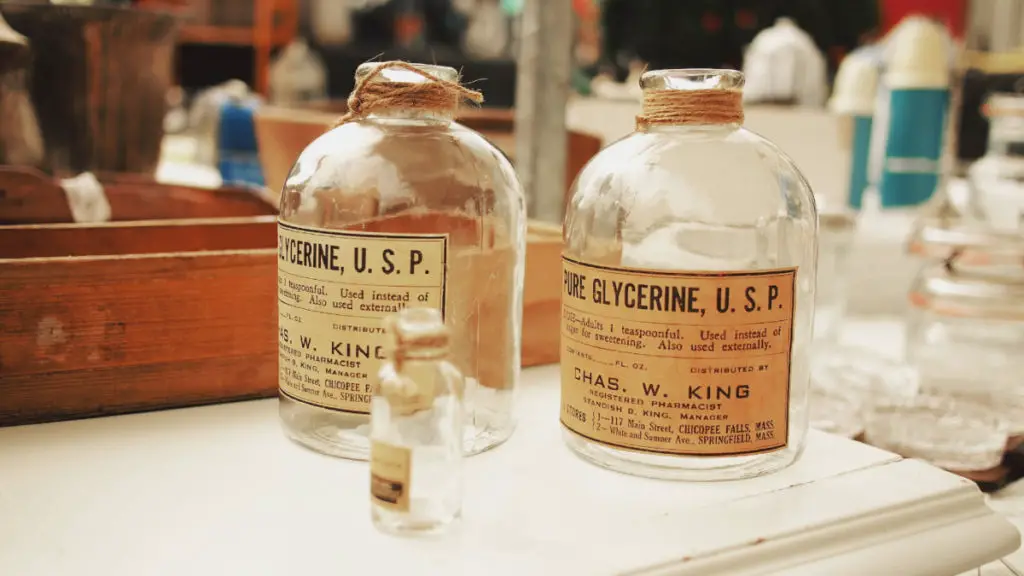There are several ways to make soap, each one of them with specific components. Glycerin can be used within that process but, do you really need it to make soap? Or can you do it without?
You cannot make soap without Glycerin because handmade soaps will naturally have Glycerin in them, as it is a byproduct of the saponification reaction between acid and oils. However, one can remove it from the soap afterward, which as a result, will have soap without Glycerin.
Whether you’re seeking a fun hobby, saving money, or pursuing a new business venture, our step-by-step guide makes crafting spa products enjoyable and easy, perfect for hobbies, saving money, or starting a business. Explore 126+ recipes, from soaps to lotions, with our beginner-friendly Quick Start Guide. Ditch store-bought products with unknown chemicals and embrace personalized, high-quality creations that cater to allergies and sensitivities using The Handcrafter’s Companion.
To most of you, Glycerin is something you probably have never heard of. The same can be said for me. Until I started making soap, I had no idea what it was or where it came from. To my surprise, after some research, I had found out that this colorless and odorless substance can be found in most skincare products or soaps we buy today.
Why? Well, without going too technical, it is a humectant that attracts moisture from the air to the skin and, therefore, is the ideal moisturizer you could use for your skin.
Can you make soap without glycerin?

Let’s see if making soaps without Glycerin is possible. Well, as previously mentioned, it would be quite hard to do it without, as you will always have naturally produced Glycerin within your soap when using any traditional soap-making method.
So, is there a way to have it less or even not at all? Well, as it turns out, the only thing you can do is remove the Glycerin after the saponification process. Another option will be to focus on a different kind of Glycerin (such as vegetal instead of animal) if you wish to make a vegan soap.
But to me, the main question would be, why would you want to remove Glycerin in the first place? Unless your skin has an allergic reaction to it, soaps lacking Glycerin may actually harm your skin. Therefore, I would rather have it in my soap.
Where does Glycerin come from?

When using a cold or hot process soap-making method, Glycerin is the saponification reaction between acids and fat/oil. You can buy Glycerin separately in case you wish to add more to your soap; however, it naturally comes from animal fats or plant oils when you make homemade soap.
For those who bought a commercial soap with Glycerin in it and wished to know if the product they are using is vegan or not, some companies will list vegetable Glycerin on the ingredients label, and some will not. Quick note: when it’s not written on it, it does not mean it’s animal-based. It just means that you have no way to find out.
Why is glycerin bad?
Glycerin is not harmful at all. In fact, it’s entirely safe to use in skin products or soaps. However, similar to almost all-natural ingredients, some people may have an allergic reaction. You may experience it like a rash, redness (spots), or itchiness (basically like any allergic reaction one would have).
If that is the case, you need to stop using the product immediately and contact your doctor for medical advice and/or treatment. I know a lot of people who think this is not such a big deal to have a slight rash, but they don’t realize that it builds up and may get much worse over time, so don’t ignore it!
Why Glycerin is needed in soaps.
Commercially prepared soaps are really not as good for your skin as they are advertised; in fact, I would say they are not good at all. One of the main reasons for that is that these soaps are often made with chemical detergents and synthetic lathering agents. And unfortunately, these can irritate the skin pretty severely.
These ingredients are far cheaper to make soaps, and all these companies want to do is make more money with less. And on top of that, most commercial soaps have their Glycerin removed so that it can be used in other cosmetics. But, when it comes to handmade soaps, where natural oils and lye are used, you’d clearly see and feel that it does soften the skin and moisturize it and feel the presence of Glycerin.
This is why you need Glycerin in your soap. Unless you are one of the few with an allergic reaction to it, Glycerin is a must in any soap. Also, you have the advantage of making your soap much cheaper.
Can Glycerin be removed from soap?
If in case you have a reaction to Glycerin or, for some other reason, do not want it in your soap, it is possible to remove it. Back in the 1800s, large industrial manufacturers would use this method to make soap. Today, large soap manufacturers use a somewhat similar technique but separate Glycerin from their final product and use it in cosmetics.
Here is how you do it:
Pour some salt water into a pot and add the soap you wish to remove Glycerin from. Once heated, you’ll see the soap float in curds, scoop them out, and that’s it. You have soap without Glycerin. The Glycerin in this process will sink in the saltwater, as salt makes soap float to the top but makes all the liquids, including glycerine, sink to the bottom.
Conclusion
Without Glycerin, your soap will be harsh on your skin. Unless you have an allergic reaction, I would not recommend removing it from your soap. If you wish to add extra Glycerin to your soap, you can buy them separately, but it’s not needed in most cases with handmade soap.
